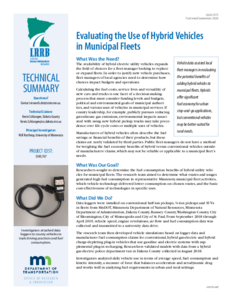Master Plan for Albert Lea: A Joint Report to the City Council of the City of Albert Lea, Minnesota
Date Created
1948
Description
Recycled Materials in Unbound Aggregate Base Layers in Minnesota
Date Created
2016
Report Number
TRS1604
Description
Techno-Economic Analysis of Implementing Hybrid Electric Utility Vehicles in Municipal Fleets
Date Created
2020
Report Number
2020-25
Description








